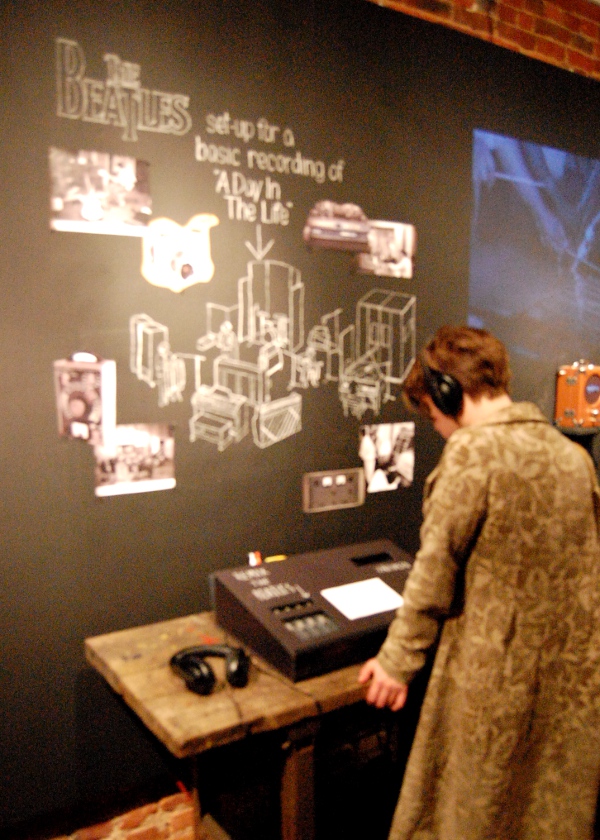
Handmade sound with Bill Moriarty
Unlike many art openings on First Friday in Philadelphia, people this past weekend were lining up not to see anything so much, but to hear it. Mixing artist, recording engineer, sound designer and record producer Bill Moriarty has a show of sound art that just opened at Art in the Age of Mechanical Reproduction in Old City. Although the show’s main focus is what you hear and not what you see, there are still plenty of diagrams and written explanations on the walls detailing Moriarty’s process for recording and manipulating sound.
Art in the Age was packed on Friday night. Perhaps some people were milling around waiting for the free, unique drinks they produce, but mostly everyone was there to hear what the “sound art” was all about. Unlike some audio exhibits, this was not about trippy noises and synthesized landscapes played over an experimental video. Moriarty was in many ways helping to instruct his audience on how they themselves could become sound artists, and that was probably one of the most positive things about the show — instead of showcasing only his own talents, he opted instead to share knowledge.
The whole show is set up along a wall with a blackboard as its backing. A few different stations line the way with magnetic tape and gadgets hanging amidst descriptions and charts explaining the physical process of capturing or altering sound bites. Pairs of headphones invite visitors to tune in and try their own hand at engineering some audio.
One station, for instance, allows the listener to remix The Beatles track “A Day in the Life” in real time while it is playing. The four-channel mixer cuts the song into recorded parts, much as The Beatles would have been reviewing it in their studio in the late 1960s. If you had any doubts about how different tracks are laid together to form an entire song, this makes things quite clear. It allows users to raise and lower the volume of individual parts as well as speed up or slow down the playback.
Moriarty also has an area of audio oddities set up, including illusions (do the notes go up or down?) and historical clips (the first recorded human voice in 1860 and another early recording of the last living castrato). There is also a device set up that explains how to set up a microphone to produce reverb. The mic is live, and when wearing the headphones, every sound in the room becomes a distant echo.
If you have an interest in sound, this is definitely the show to see (or hear). Sometimes, the world of audio seems almost mystical and far removed from music consumers, but Moriarty takes the wizardry out of the production aspects and lays it out for everyone. This show is fun and instructional and sheds some light on both digital and analog processes. If you were ever curious about sound, this is a great starting point.
Art in the Age of Mechanical Reproduction is located at 116 N. Third St. in Old City; 215-922-2600.
Recent Content
-
Artsarticle ·
-
Artsarticle ·
-
Artsarticle ·

